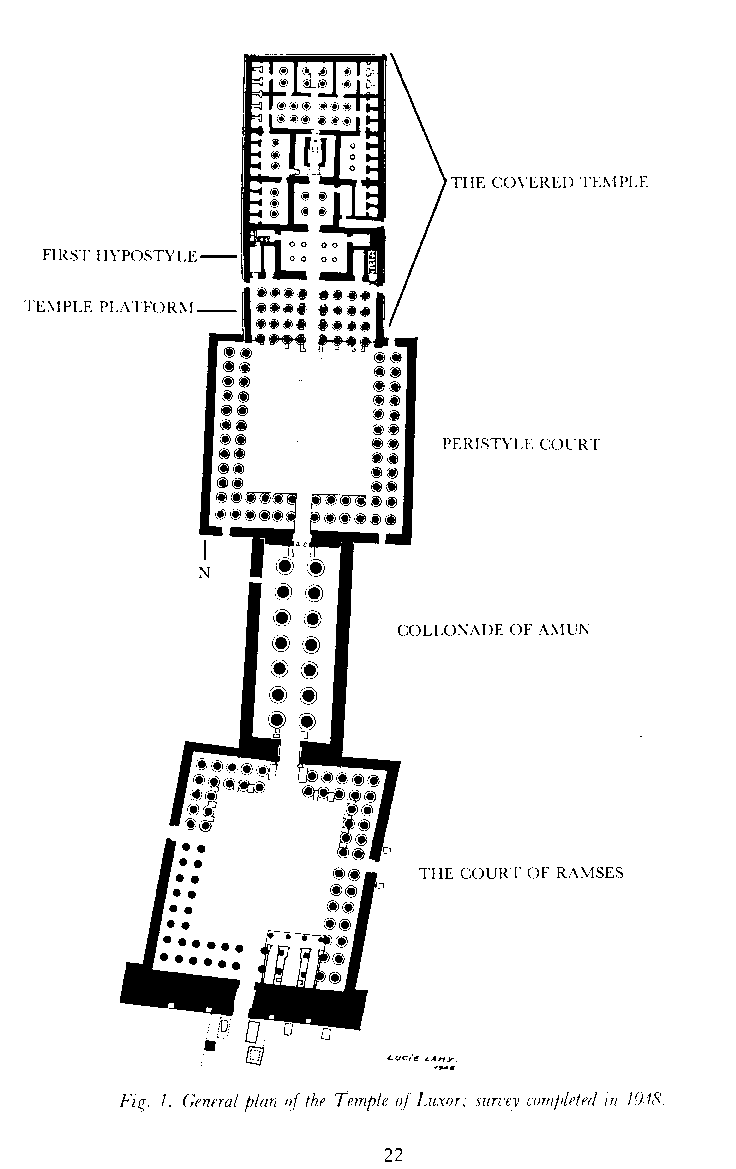 The plan of the temple of Luxor,
by Lucy Lamy,
from (Schwaller de Lubicz, 1977), Fig. 1, p. 22.
Note the angles.
Original caption:
The plan of the temple of Luxor,
by Lucy Lamy,
from (Schwaller de Lubicz, 1977), Fig. 1, p. 22.
Note the angles.
Original caption:
General plan of the Temple of Luxor; survey completed in 1948.
René, Isha, and her daughter Lucy, lived in Luxor for fifteen years, to study the temples at Karnak. During this time, all three immersed themselves deeply in the Temple of Luxor, and the symbols presented by its architecture and its bas-reliefs. The results of their work are presented in The Temple in Man.
The PHI proportions were discovered in the following drawings, all from bas-reliefs found in Room 20, near the upper label on the left side of the plan shown above.
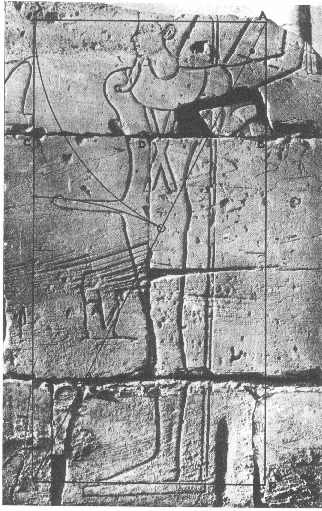 Bas-relief from the east wall of Room 20,
from (Schwaller de Lubicz, 1977), Fig. 6, p. 40.
The PHI construction is superimposed on the
ancient full figure.
Original caption:
Bas-relief from the east wall of Room 20,
from (Schwaller de Lubicz, 1977), Fig. 6, p. 40.
The PHI construction is superimposed on the
ancient full figure.
Original caption:
Luxor. Kamatef situated at N on the plan. The superimposition of the outline of divisional PHI (fig. 8) gives the location of the phallus at the place of the navel.
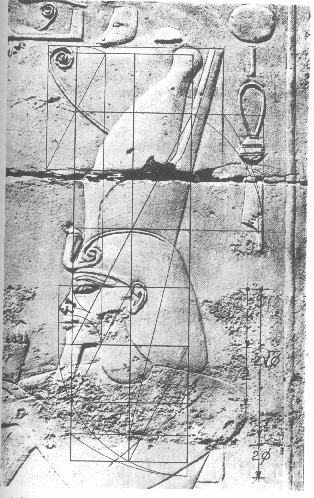 Bas-relief from the east wall of Room 20,
from (Schwaller de Lubicz, 1977), Fig. 9, p. 43.
The PHI construction is superimposed
in three places
on the face of the ancient figure.
Original caption:
Bas-relief from the east wall of Room 20,
from (Schwaller de Lubicz, 1977), Fig. 9, p. 43.
The PHI construction is superimposed
in three places
on the face of the ancient figure.
Original caption:
Luxor. Bas-relief from room 20. Breakdown of the face according to the Golden Section: from the chin to the upper eyelid, 1; from the chin to the mouth, 1/PHI; from the chin to the eyebrow, (SQRT 5)/2; from the chin to the eyebrow, (SQRT 5)/2 - 1.
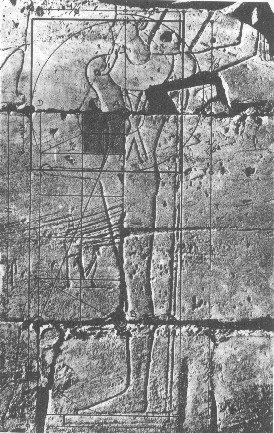 Bas-relief from the east wall of Room 20,
from (Schwaller de Lubicz, 1977), Fig. 27, p. 76.
Original caption:
Bas-relief from the east wall of Room 20,
from (Schwaller de Lubicz, 1977), Fig. 27, p. 76.
Original caption:
Luxor, Kamutef. The stone joints determine the rectangle ABCD. AB = X, BC = X/2.5, and 1/2 BC = X/5. Given that X = 1 = 1/PHI2, X/5 * (SQRT 5) = 1/PHI of the complete figure equal to PHI2 1/PHI * PHI = 1/PHI + 1/PHI2 = 1.Here, AB is the vertical distance between the two horizontal joints, and BC is the horizontal distance from the vertical joint to the end of the phallus.
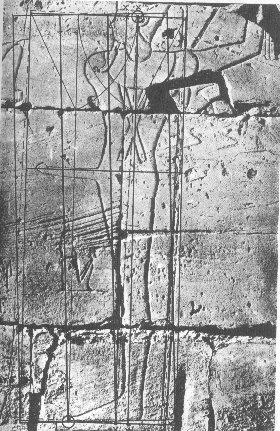 Bas-relief from the east wall of Room 20,
from (Schwaller de Lubicz, 1977), Fig. 28, p. 77.
Original caption:
Bas-relief from the east wall of Room 20,
from (Schwaller de Lubicz, 1977), Fig. 28, p. 77.
Original caption:
The outline is designed to show the two slopes imparted to the vertical line XX passing through the stone joint, and giving the Kamutef movement. The axis of stability starts from the center of equilibrium X' (inner ear); its slope is given by the angle A. The axis of movement starts from the tip of the foot; its slope is given by the angle B.
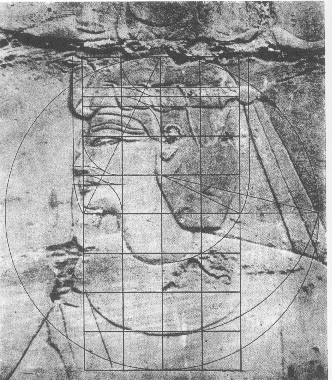 Bas-relief from the east wall of Room 20,
from (Schwaller de Lubicz, 1977), Fig. 47, p. 120.
Original caption:
Bas-relief from the east wall of Room 20,
from (Schwaller de Lubicz, 1977), Fig. 47, p. 120.
Original caption:
Study of the profile (fig. 46) divided according to the Golden Section (see also figs. 7, 8, and 9).